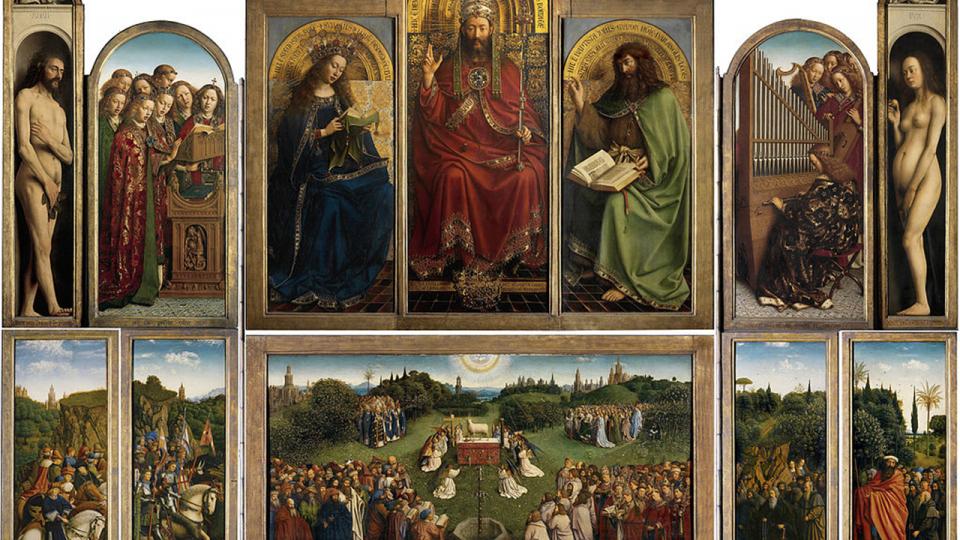Banner to the Lamb of God


This August ’s month, the Grand Curtius highlights a processional banner that is part of the rich textile collections of the Department of Religious Art. This piece depicts an agnus dei (Lamb of God) which, in the Christian religion, refers to Jesus Christ as the sacrificial victim intended to take away the sin of the world.
Embroidered in grey and silver threads on a burgundy cloth decorated with floral patterns, this lamb contains all the iconographic attributes related to the Eucharistic figure; the halo, the liturgical staff and the chalice filling with the blood of the sacrificed Lamb - whose slightly pinkish hue should be noted - are all markers referring to the sacred narrative.
Moreover, the wound on its side reminds us of the central panel of the polyptych of The Adoration of the Mystical Lamb by Van Eyck brothers (1432), which is currently being restored at the Museum voor Schone Kunsten in Ghent.
The interest of such a piece lies not only in its content but also in the practice inherent in it. In other words, in order to appreciate this processional artefact, we must reach the intersections of the sacred and secular spheres and study it as a practical work, an image with which we (inter)act. In this way, Sacred Art set in motion - practically and theoretically - by the laity takes on ritual meanings: the image of the Lamb of God then becomes performative.
We therefore must consider this banner of the agnus dei within a multitude of social relations brought into play by its primary vocation: the act of procession. In this way, the figure of the Lamb of God becomes, in a sense, a social image by which a community identifies itself when this textile was suspended from a horizontal stick carried by a pole in the streets of the city.
This banner, as well as all the non-vintage processional objects usually reused from one year to the next, can hardly be dated precisely. However, it is likely that the artifact presented here dates from the second half of the 19th century.
Benjamin Monseur, Philosopher and Art Historian